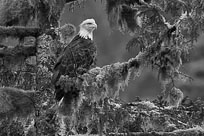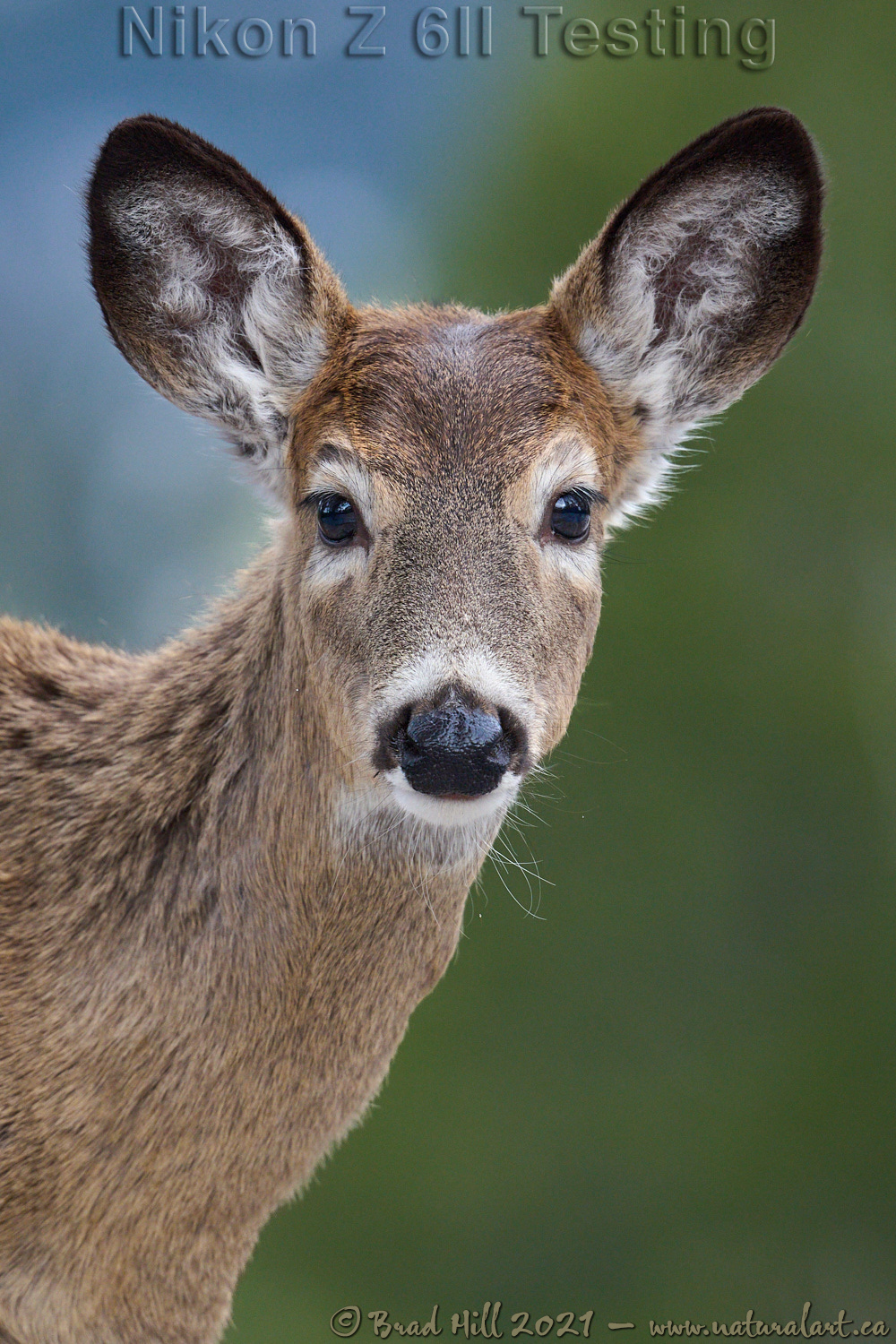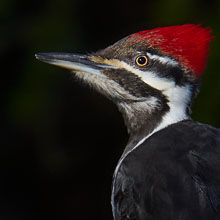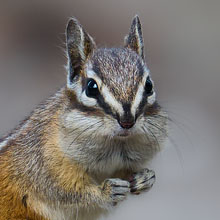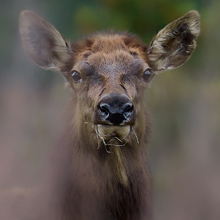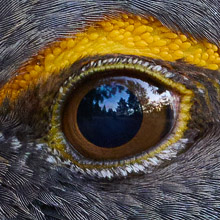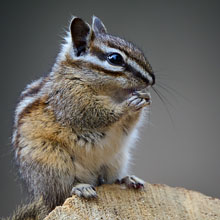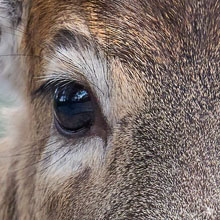Availability: Undetermined - Enquiries?
In the Field
Z 6II Testing - Curious White-tail Yearling. Findlay Creek Region (East Kootenays), British Columbia, Canada. April 11, 2021.
This is my sixth gallery post and pontification on my experiences with shooting wildlife using the Nikon Z 6II. In this case the subject is portrait of a yearling female White-tailed Deer that lives in and around our acreage in the East Kootenays of BC. Two things distinguish this particular young doe from others in the area: Last spring and summer it was - without doubt - the smallest white-tail fawn I've ever seen. By the time this shot was captured the young doe should have been approaching adult size, but it was still no more than half the size of mom. And, this little girl has to be the most curious deer I have ever seen. If it's in the immediate vicinity of our cabin it's so relaxed with my presence that it will often stop what it's doing, approach me, and then watch (and watch and watch) what the screwy cabin occupant is doing! Of course, like with a lot of wildlife, its behaviour is very location-dependent - if I bump into this deer or any of its immediate family on the other side of our acreage I can't get within 300 meters of them without them bolting away (flashing their white tails as they depart).
This portrait is another example of just how well Nikon's Z series cameras work when you're shooting with teleconverters. This image was captured hand-held with the Nikkor 500mm f5.6E PF super-telephoto lens and the 1.4x TC-14EIII teleconverter, for a total focal length of 700mm. I can't overstate how happy I am with the performance of this camera/lens/TC combo for shooting wildlife - the camera focuses very fast and very accurately with it (using ANY of the cameras 273 focus points), it's light enough for most shooters to hand-hold (even at comparatively low shutter speeds), and optically the combination is simply excellent.
I know a lot of wildlife photographers will counter with "Yeah, but that combination has a maximum aperture of f8, so it will be no good for isolating your subject or for creating a nice, soft background." Oh...really? Do you mean like the overly detailed and distracting background in THIS shot? ;-)
One of the most critical things a wildlife photographer can learn (and integrate into their DNA) is that the largest determining factor impacting on the "softness" of your subject's background is NOT the aperture you choose (or the maximum aperture of the lens in your hand) but the critical ratio of the distance of YOU to your subject vs. the distance of the subject to the background. If you consider "distance to subject" as the numerator of a fraction, and the "distance of the subject to the background" as the denominator of a fraction, you basically want the resulting value to be one or less. In other words, you want to be closer to your subject than it is to the background. Of course, the exact value of that fraction that you need to have to get a pleasing background will vary with the focal length of the lens in question, the maximum aperture of your lens, etc. - but at the end of the day it doesn't matter what lens you're using (or how fast it is) if that fraction equals a value of 3 or more you aren't going to be able to produce a soft, dreamy background.
This image? Shot at f10. Why? To give me the DoF I needed to get all the critical parts of the doe's face in sharp focus (and no...I did not focus on the deer's eye). How did I get the background so soft? By waiting (and waiting, and waiting) until the deer moved to a position where the background objects (the green is a group of Douglas Fir trees approximately 70 meters behind the doe and blue is a distant mountain ridge about 2 km away) were much further behind the deer than I was FROM the deer. So...while I won't say "...forget about aperture when trying to blur a background", I WILL say "ALWAYS keep that critical distance-to-subject vs. distance-of-subject-to-background ratio in the foremost of your mind". ;-)
Here's a larger version (2400 pixel) of this curious young doe:
• Curious White-tail Yearling: Download 2400 pixel image (JPEG: 1.8 MB)
ADDITIONAL NOTES:
1. This image - in all resolutions - is protected by copyright. I'm fine with personal uses of them (including use as desktop backgrounds or screensavers on your own computer), but unauthorized commercial use of the image is prohibited by law. Thanks in advance for respecting my copyright!
2. Like all photographs on this website, this image was captured following the strict ethical guidelines described in The Wildlife FIRST! Principles of Photographer Conduct. I encourage all wildlife photographers to always put the welfare of their subjects above the value of their photographs.
Behind the Camera
Z 6II Testing - Curious White-tail Yearling. Findlay Creek Region (East Kootenays), British Columbia, Canada. April 11, 2021.
Compressed RAW (NEF) 14-bit format; ISO 2250.
Nikon Z 6II paired with Nikkor 500mm f5.6E PF plus TC-14EIII (1.4x) teleconverter (for a total focal length of 700mm). Hand-held. VR on and in Normal mode. Single Point Area AF area mode.
1/250s @ f10; -0.3 stop compensation from matrix-metered exposure setting.
At the Computer
Z 6II Testing - Curious White-tail Yearling. Findlay Creek Region (East Kootenays), British Columbia, Canada. April 11, 2021.
RAW Conversion to 16-bit PSD file (and JPEG files for web use), including all global and selective adjustments, using Phase One's Capture One Pro 21. Global adjustments on this image were limited to a single tweak to brightness (mid-tone exposure). Selective local adjustments performed using Capture One Pro's layers and masking tools. In this case selective adjustments were made on 8 separate layers and included one or more tweaks to clarity, highlights, shadows, blacks, and exposure.
Photoshop modifications were limited to the insertion of the watermark and/or text.
Conservation
Z 6II Testing - Curious White-tail Yearling. Findlay Creek Region (East Kootenays), British Columbia, Canada. April 11, 2021.
Species Status in Canada*: This species is not designated as at risk.
White-tailed Deer (Odocoileus virginianus) are one of the most widely distributed mammals in North America - they can be found in virtually all of southern Canada and in most of the American states. While whitetails are common now, in the late 1800's they were in serious risk of extinction - their populations had been reduced from about 40 million (across North America) to under 500,000. The conservation effort to return whitetails to numbers sufficient for long-term survival was massive and included strict harvest regulations, intense management, reintroductions, and habitat protection. Today, most populations in the United States do not represent original stock and the distinction of most historical subspecies is uncertain.
Whitetails resemble Mule Deer quite closely, and the two species overlap in distribution in western North America. The two species tend to prefer different habitats, with whitetails occupying more heavily forested land and along river valley bottoms, while muleys tend to prefer uplands and montane areas. On rare occasions, the two species will interbreed. Occasionally the offspring are fertile, but in most cases they are sterile.
This whitetail fawn was photographed in the Columbia Valley of the East Kootenays. While this species is not currently considered at risk, many ecosystems within the Columbia Valley face development pressure, including pressure from logging operations.
*as determined by COSEWIC: The Committee on the Status of Endangered Wildlife in Canada










